The Fizz #29: Bree and Chad Stock of Limited Addition Wines are betting on plant diversity as the future of Oregon wines
Limited Addition winemakers Chad and Bree Stock talk about the importance of experimentation, plant diversity, and fair labor practices for the future of Oregon winemaking.
Earlier this month, I flew out to California and Oregon to visit with winemakers I’m excited about, and take some time to rest. For the 29th issue of The Fizz, I ventured out to Oregon’s Willamette Valley to meet with Bree and Chad Stock, founders of Limited Addition Wines, and the consulting company Constant Crush.
Bree and Chad are a small team with a lot of experience—Bree holds the Master of Wine title, is a WSET educator, and a board member at Assemblage Women in Wine, Masters of Wine North America and Demeter Biodynamic. Chad is currently the winemaker at David Hill, and has worked previously at Antica Terra, Minimus—a label he founded, and makes the Limited Addition wines. Beyond their qualifications, this duo has a vision for the future of Oregon winemaking that focuses on plant diversity, fair labor practices, and extending the life of the local wine industry in the face of climate change.
For this interview, we met at the David Hill vineyards, about an hour from Portland, OR, where Chad and Bree walked me through the history of the area, and how it ties into their vision for the future.
Margot: Where are we right now?
Chad: We’re at the David Hill vineyard. I’m the winemaker for David Hill, and this is where we make our wines for Limited Addition as well. I’ve been here for two years, so this is going to be my third vintage. The family here was generous enough to allow us to have some space in the winery to make our wines. It’s still a virtual winery in a way. We don’t own our vineyards or our own wine building.
Bree: We both still have day jobs!
Chad: Yeah, Limited Addition doesn’t make any money yet. It will—we’re investing any profit back into growth right now.
This is a very rare vineyard for the area. In the beginning in the 60s and 70s, all the vineyards were planted with diversity, because they didn’t know what was going to work. Each of the different growers that planted in this area in the 1960s had a grape variety or two in mind that they were really excited about. David Lett chose Pinot Noir and Pinot Gris. Charles Coury chose Riesling. Most of the Pinot Noir that exists here was either grafted onto Riesling or was just a new planting that happened after Charles Coury left. In 1991, the family that owns this place now started planting extra vines.
This place is kind of like a museum—there are two distinct eras of development here. The 60s/70s/80s were the founding years, and in the late 1980s, there was a big technological boom which meant a lot more rootstock material, a lot more clonal material on Pinot Noir. We had this massive Dijon clone thing happen for about 20 years—1988 to 2010. Around then things started changing, and that’s when the Johan team and myself started all the grafting and research projects back in 2009. That was ground zero—where the conversation started changing.
There’s been this growing third era, where we’re thinking about what else can we grow? What other styles can we do? Everything is on the table. I didn’t think I’d see this until much later in my career. We’re hoping to further develop this property and represent that third era. I’m having a conversation with the owners about what that might look like. There’s about ten more acres of plantable land here, and we’re looking at putting some new grape varieties on the property. There are seventeen grape varieties here already, twelve or thirteen of them produce a viable quantity of wine. The smallest production one, Savangin Rose from the Jura, I make one barrel of per year.
Chad: This was originally a vineyard in the late 1800s, a winery and small mixed farm—berries, potatoes, things like that. This whole area was called “Wine Hill”. The original Willamette Valley wine industry was here. This is where it was all planted, in this section of the valley pre-prohibition. The family that planted this and originally owned it as a vineyard pulled the vines out around 1921 because of prohibition, which squashed the industry. They diversified the farm to other mixed farming. Vines were not planted here again until roughly 1965, when Charles Coury purchased the property and started his nursery. In the beginning with the Reuter family, they planted Riesling and Chasselas. There wasn’t Pinot Noir here. It was all German, Alsatian, and Swiss white varieties, because the families settling here were mostly of German descent.
It was interesting when Charles Coury actually bought this place, he planted the vines to white varieties for the most part. He believed that white grape varieties were going to be the thing here for the Willamette Valley in general, but also the history of this place having had success winning gold medals with white wines at competitions in the early 1900s like the World’s Fair. Charles Coury had a bachelor’s degree in climatology from UCLA and did a master’s emphasis in enology at UC Davis. He was doing climatic research in Alsace—he was trying to study the idea of growing grapes in a cold climate. We assume he probably brought some of this plant material back from Alsace. We don’t know the origin of some of the material here. He grew up in the Carneros area of Sonoma, so we assume he probably pulled vine material and made some of his own vines. He had a small nursery built up.
Bree: His research in Alsace was based around the belief that the best wines are made from regions and varieties that ripen at the very end of the season, so you have sugar development and acid and flavor development coming together right at the end of the season. He was looking for that place here. This was his research vineyard.
Chad: This is a really important concept that will always be a guide for the future here, because if we do have global warming, what’s going to ripen at the end of the season is going to change. We’re slowly becoming more of this Bordeaux varietal end of the season region. If you want to ripen Cabernet Franc and Sauvignon here, it’s perfect, but it ripens right at the very end.
Bree: Same with Sauvignon Blanc.
Chad: With this in mind, a lot of what was originally planted ripens too early now on an average vintage over the last 20 years—not just a hot vintage. We are facing that issue now, and this research that Charles Coury did is critical to remembering that objective. Laying that in with the complications of operating a business in this industry, what does the market want, farming practices. We have to think about what makes sense to work with.
Bree: That has informed what we do with Limited Addition as well.
Chad: We take into account this idea that these labor shortages and all of these other challenges—if the industry is all growing one or two grape varieties and they’re harvested within two weeks, it’s a massive bottleneck. Everything gets flipped upside down for one month and it’s absolute chaos.
Bree: The vineyard labor here often doesn’t have just a single position, so they’re not salaried workers with the vineyard. They will come in for pruning at the beginning of the season, vine tying throughout, but then they’ll go off and pick blueberries and raspberries and what we’re finding with Pinot Noir starting to ripen earlier, and also flower erratically, we’re finding that crunch time where they would normally be picking blueberries is when we need them in the vineyard. We’re hitting challenges there. How do we make this a viable long term career for our labor force?
Margot: It’s interesting to hear you talk about how you’re planting in order to give farmworkers more work in the entire season so they can build a career in the wine industry specifically. When I ask winemakers about their labor force, often folks don’t know much about the workers on their vineyards, vineyard management policies, the working conditions. Do you have clarity into that?
Bree: Yeah, we actually question the vineyard management companies that our growers work with. We recommend vineyard management companies if we’re developing a vineyard—we’ll put them in touch with the right people doing this work. The larger vineyards we work with, they’re managed by Atlas Vineyard Management, which is a California company, but we’ve asked to see their requirements for their workers, what they offer. They offer healthcare and salary positions, minimum working wages that are above $15/hour, things like that. We’re asking those questions and trying to get people in the industry to start asking those questions.
Margot: That’s great to hear.
Bree: Oregon, I just heard, finally brought in OSHA regulations about people working in the heat.
Margot: Do you use any of these grapes for Limited Addition?
Bree: David Hill owns this vineyard, we don’t take any grapes from it for Limited Addition. We just use the facility. We have four vineyards that we’re sourcing fruit from, from growers we work with who have either planted alternative varieties for us—a research vineyard for what is capable in the Willamette Valley, and some vineyards that were either planted earlier that have alternative varieties, or grapes being grafted over to alternative varieties. We purchase fruit from the first vineyard in the Chehalem Mountains, Chehalem Mountain Vineyard, planted in 1968. We get Grüner there, Blaufrankisch, Chardonnay, Gamay, St. Laurent. They still have their phylloxerated Pinot Noir vines, too.
Margot: How much of a say do you have in the vineyard work with your growers?
Bree: It’s limited. In two of the estates, as Chad’s work gets known and what we’re doing together gets more known, they’re starting to let us take control of the entire vineyard and block it out. We’re able to plant whatever we can. We’re still in that phase of—people still want to plant Pinot Noir, but they’re also now being cautioned and saying “okay there’s a lot of Pinot Noir over here, how do I diversify my vineyard?”. They’re allowing us to do that. The big vineyard we work with in Eola-Amity Hills is the Eola Springs Vineyard, and they have 3 acres of Mencia planted for us.
Margot: That’s cool!
Bree: Yeah! And we have 4 acres of Cabernet Franc coming out of there now. There’s Chenin Blanc, 4 acres of Trousseau. It’s building. Whereas in the past it’s been a half acre here and there. A half acre only gives you 100 cases.
Chad: You have turn that 100 cases into a very powerful statement, so people know that it’s possible, it exists, and it’s successful. That’s what we’re trying to do. We’re trying to make 100 cases of this and 100 cases of that—a billboard basically. We do almost zero direct to consumer, intentionally. We’re trying to get the wines into the market. If we sell directly to people who want to buy, which is great, it makes us more money, but the overall market won’t know about it. We need to get the wine in front of buyers, sommeliers, journalists, writers—they’ll be able to spread the word. It’s tough to build a company on 100 cases of this and that—you end up making 40 wines, all small batch.
Bree: There’s a lot of change that needs to happen in this industry, and that starts with people having discussions. If we can be one voice in that forest, then it’s more meaningful for us. We want to work in an industry that is good for everyone—it has to be good for the entire community.
Chad: We’re trying to show a new business model that is going to be sustainable for the next generation. Through plant diversity, you can have better economic returns on the farming. You can have a heck of a lot more imagination around the style of the wines you can sell on the market. We’re trying to show that the market wants these things.
Bree: And climate change is demanding that as well.
Chad: We have to change out of this Pinot Noir driven model. There’s another model we can evolve into that can buy us another 20, 50 years of time.
Margot: What does the future look like for you? Is your goal to have your own estate vineyard?
Chad: Not currently. If our conversation involves more farmers, instead of us having our own place and being a hermit on the hill, the more people we include in our project, the more people are going to learn about it. And it’s just more fun! We love the farmers we work with—they’re friends. Our kids play together. We’re building a community.
Margot: I love that, that’s so meaningful. Are there any fruit trees on the property?
Chad: Wild ones, yes. There are also some apple trees planted in the front of the house. This was largely an orchard, and there are some trees that remain from that—cherry, pears, apples. We don’t really maintain them, though. We make one barrel of cider.
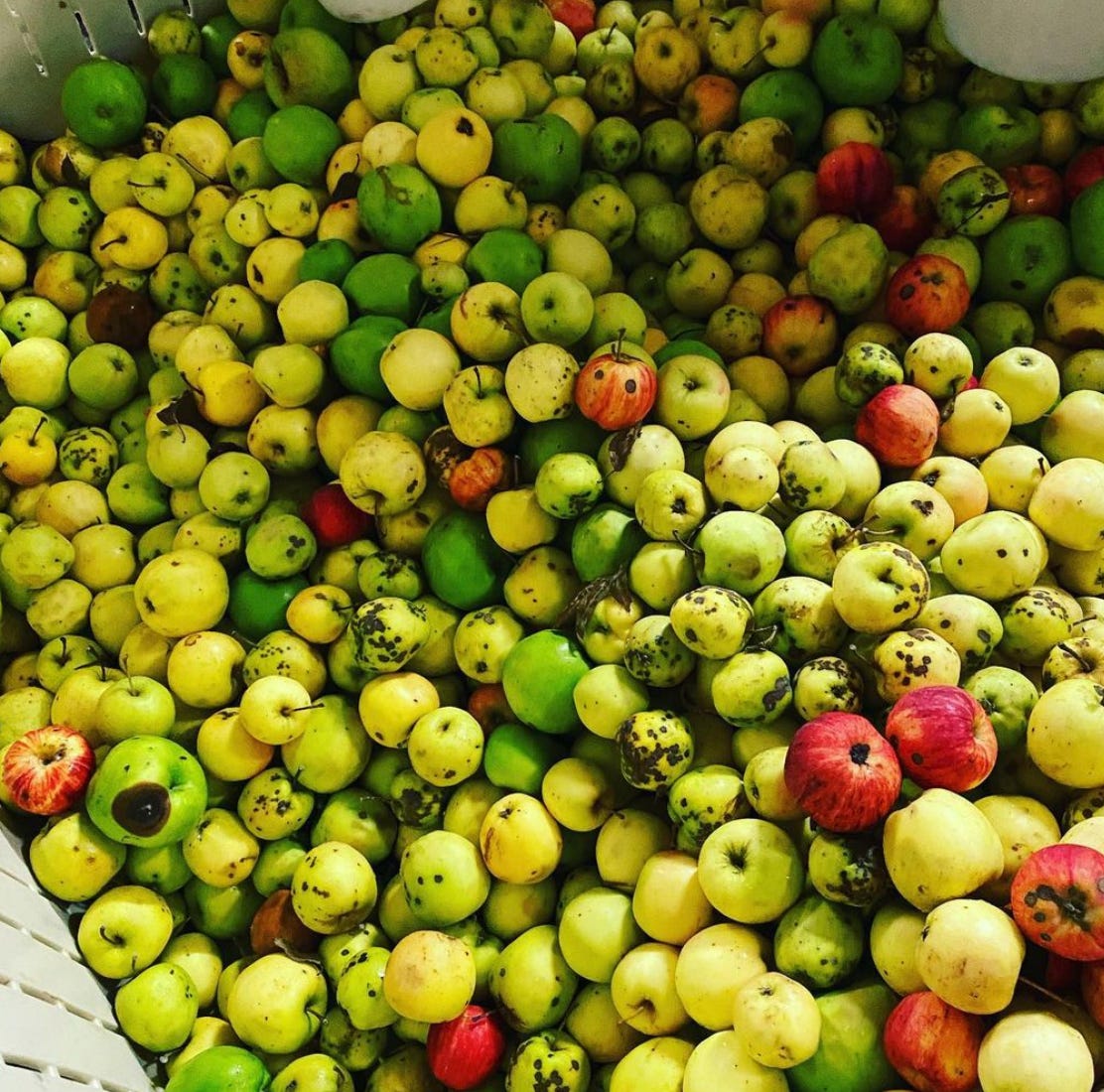
Margot: The more I talk to winemakers in this region, the more I see winemakers starting to experiment with fruit wines or co-ferments with fruit. Have you thought about that at all?
Chad: Yeah, we call those meta-beverages.
Bree: We have. We have apple trees on our little 2 acre farm, and I’ve planted more cider apples. We made a barrel last year. That’s what we’re looking at doing—bridging the grapes and fruit. In 2020, the only grape variety we did lose in the fires because of smoke taint was Pinot Noir. Our diversity saved us.
Chad: A lot of wineries didn’t make any wines last year, we were only down about 20%.
Bree: Mencia, Cab Franc, Chenin Blanc, Sauvignon Blanc—everything survived. For the Cab Franc, we didn’t do whole cluster on it this year because we weren’t certain how smoke worked with stems. All the research is on the berries. When we tested this, it had low guaiacol numbers. We were still cautious but we made it into wine without risking the stems.
Chad: We analyzed everything before we harvested, which is how we knew what to pick and what not to pick. We spent a lot of time and a lot of money spending everything to laboratories and doing extensive testing, to make sure we weren’t wasting our time. The stuff we couldn’t take, we left on the vine. One of the requirements we have with all of the farms we work with is that they have crop insurance. We helped pitch in some extra money too, since they get 75% reimbursement, to help as much as we could.
[We walk back to the winery, past a unique looking row of vines that Chad points out to me.]
Chad: This is actually “First Row”—it’s the nursery row. Every grape variety planted on this property is in this row. This here [points to a vineyard section] is own-rooted, while what’s up there is all grafted. We haven’t found phylloxera. The soil here is all loess, wind blown super-fine silt.
Margot: Why is own-rooted important to you?
Chad: You know, I don’t know. I just know that when you graft, it has an impact on the vine behavior. You’re not necessarily getting the full, true expression of the grape variety. That’s my view.
Margot: Do you find that these vines are healthier than your grafted vines?
Chad: They are. The grafted vines are also planted on the worst part of the property in terms of soil health, so it’s not an entirely fair comparison, but I can tell you that every single own-rooted vineyard I’ve ever worked with—the vines are much more powerful.
Margot: This is a LIVE certified vineyard?
Chad: Yes, it’s a sustainable farming concept. It’s losing a lot of popularity though.
Bree: They’re starting to try to make it a certification that is a stepping stone to organic. They’re trying to meet people where they are and move them toward an organic certification. As we get drier, that’s easier to achieve. [Bree says this because as the conditions get drier, some fungal diseases get less pronounced, which makes it easier for a vinegrower not to use chemical sprays.]
All of this is no-till and we have cover crops between the rows. They just use under-vine tools to weed under the vines. A lot of research happening at the moment is around native cover crops that increase biodiversity but die off in the early season so they’re not competing under the vines for water and resources. There’s a lot of radishes and garlic planted in between vines here.
Margot: Oh, that’s really cool. I just met with Christopher Renfro, who planted corn in between the vines, I thought that was really interesting.
Chad: It is. I think I was the first person to do radishes in 2014. I started putting daikon in. Daikon has a long tap root and they generate a lot of sugar. The idea was to put compost into the soil without having to turn the soil. For clover and vetch, if you don’t turn it into the ground, you lose the nitrogen. The majority of nutrient in the daikon is in the soil already. The bugs go to eat them and they hollow the root out—they eat it from the inside. They don’t eat the vines, they eat the radishes.
Bree: You’re also feeding the voles, so they don’t eat the vines. A lot of people here are putting more owl boxes and trees for eagles to nest. They go across the whole vineyard and help with pests.
[We went into the winery to taste some of the David Hill wines, and a few Limited Addition wines. The winery is chock full of stainless steel tanks and oak barrels, as well as an amphora and a fiberglass vessel. A couple of folks were bottling off to the side. One of the wines that was most exciting to me was the Limited Addition Mencia.]
Margot: This is wild. I don’t think I’ve ever had Mencia from this region.
Bree: This is the first one! This is probably the most exciting wine in the cellar for me. It smelled amazing in the ferment—musk and meat and incense and crushed berries. It filled the entire fermentation room, dominating everything else in there.
Chad: We think the Mencia is an upper aromatic variety, at least here. It’s super vibrant.
Bree: This is the first year of fruit off those young vines. Four different clones of Mencia. It’s super volcanic soil surrounded by a forest—oaks on one side, cedars and firs on the other. It reminds me of being in Ribera Sacra.
Chad: This is the first planting of Mencia. Our friend Steven Thompson of Analemma in the Colombia Gorge was the first person to plant it in America six or seven years ago. It’s much warmer up there—it’s compelling, and it tastes different from what’s here in the Willamette Valley.
Bree: We’re super excited about this. We’ve got another planting of Mencia we planted last year in a different vineyard, so we’ll have different AVAs and soil types of Mencia soon.
Chad: Lourero is coming too, and Albariño. There’s so much more genetic material coming every year. The amount of stuff that’s becoming available in the last ten years—it’s amazing. Everything keeps expanding. It’s a really exciting time to be looking at diversification of the model and actually having the material at the same time.
Margot: How are you getting this plant material?
Chad: It’s coming in through Foundation Plant Services, through importation nurseries. There’s a French government program collecting all the best vine material for different plant varieties, certifying it, and sending it out to other countries. Vine universities, government programs, and private interests and nurseries are moving all this plant material around.
Bree: Most of the nurseries we work with are in Washington—Sunridge, Duarte. Foundation Plant Services has a drop down menu of what’s available, so it’s easy to search.
Margot: Thanks for that info, I know folks will find that useful. I’m so excited to see what’s next for you all, and I really vibe with your vision of biodiversity for vineyards. Can’t wait to drink these wines back home on the East Coast!
——————
You can support Bree and Chad by following them on Instagram and asking your local wine shop to carry their wines. Sign up for their wine club here to be the first to try their new releases. Share this post to get folks more excited about Limited Addition wines—they’re brilliant!
Liked this interview? Please hit subscribe below and help me record more information about exciting winemakers, American history, and help me pay my interviewees who aren’t making wine for their own label. Paid subscriptions are just $5/month or $50/year, and 15% goes to St. Francis House. If you share this piece with a friend, it would mean a lot. Thanks for reading! You can follow me on Instagram here.

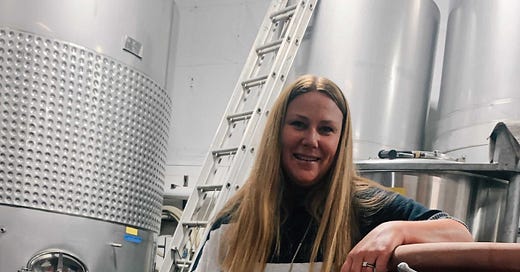


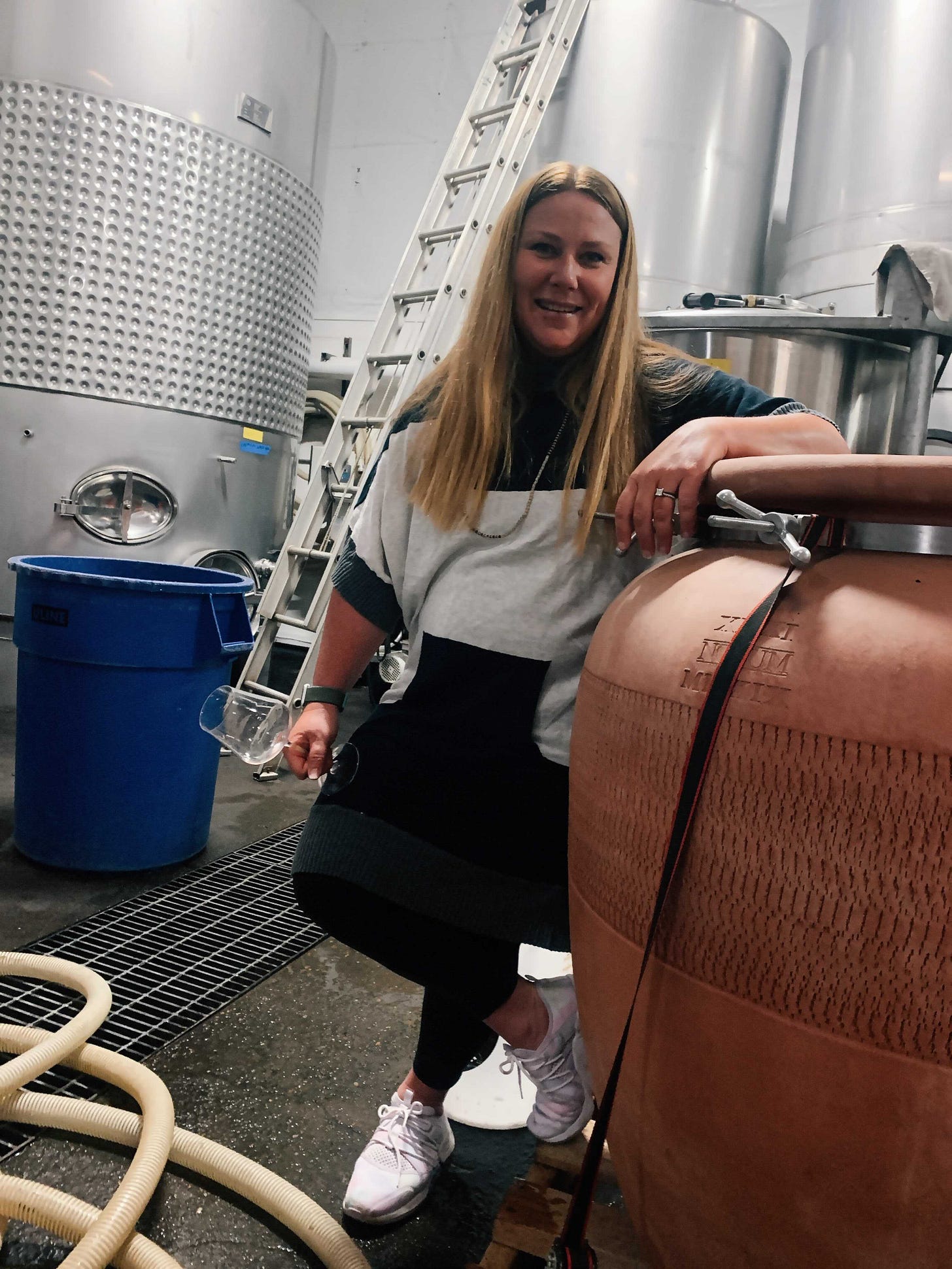
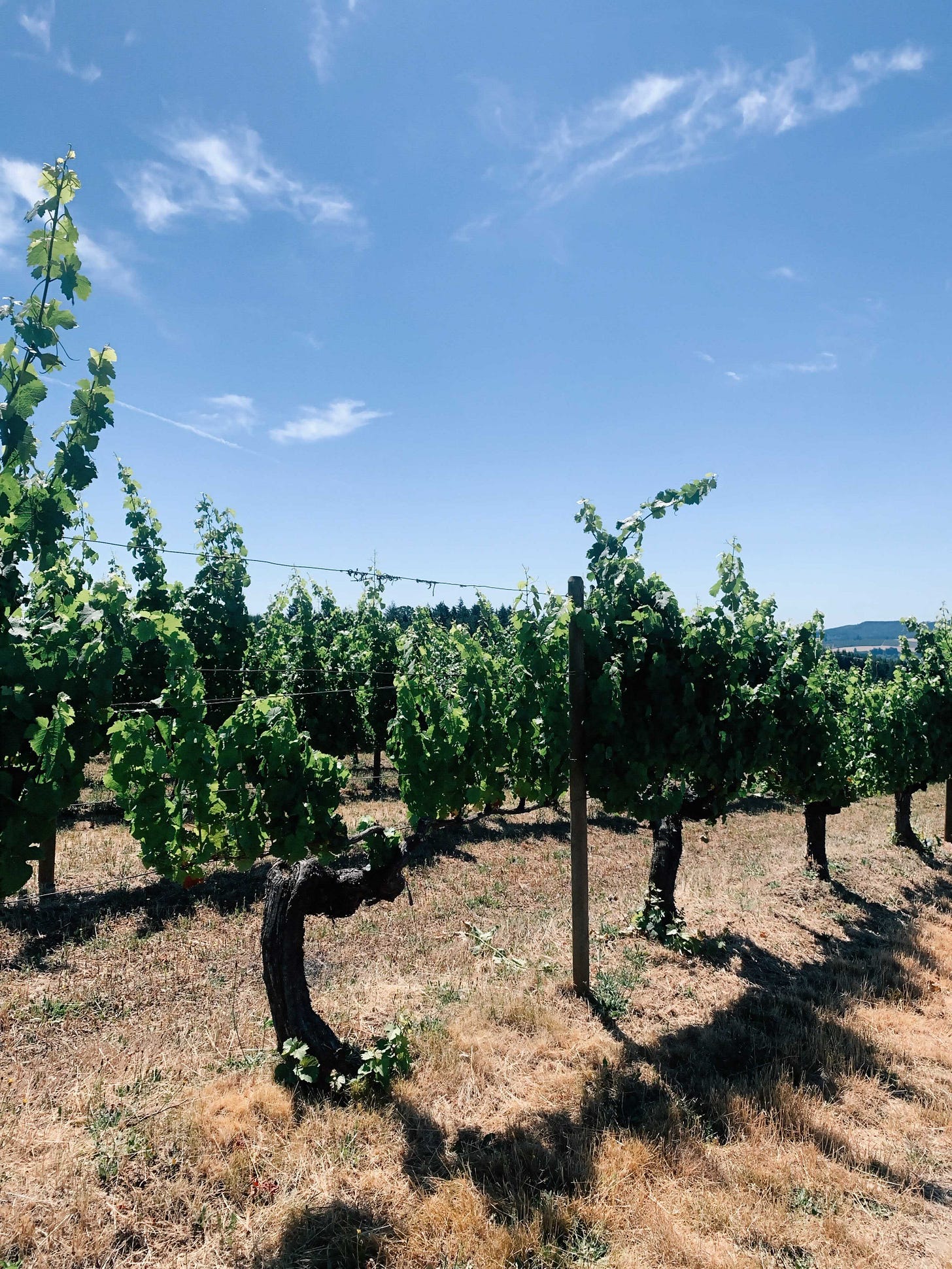
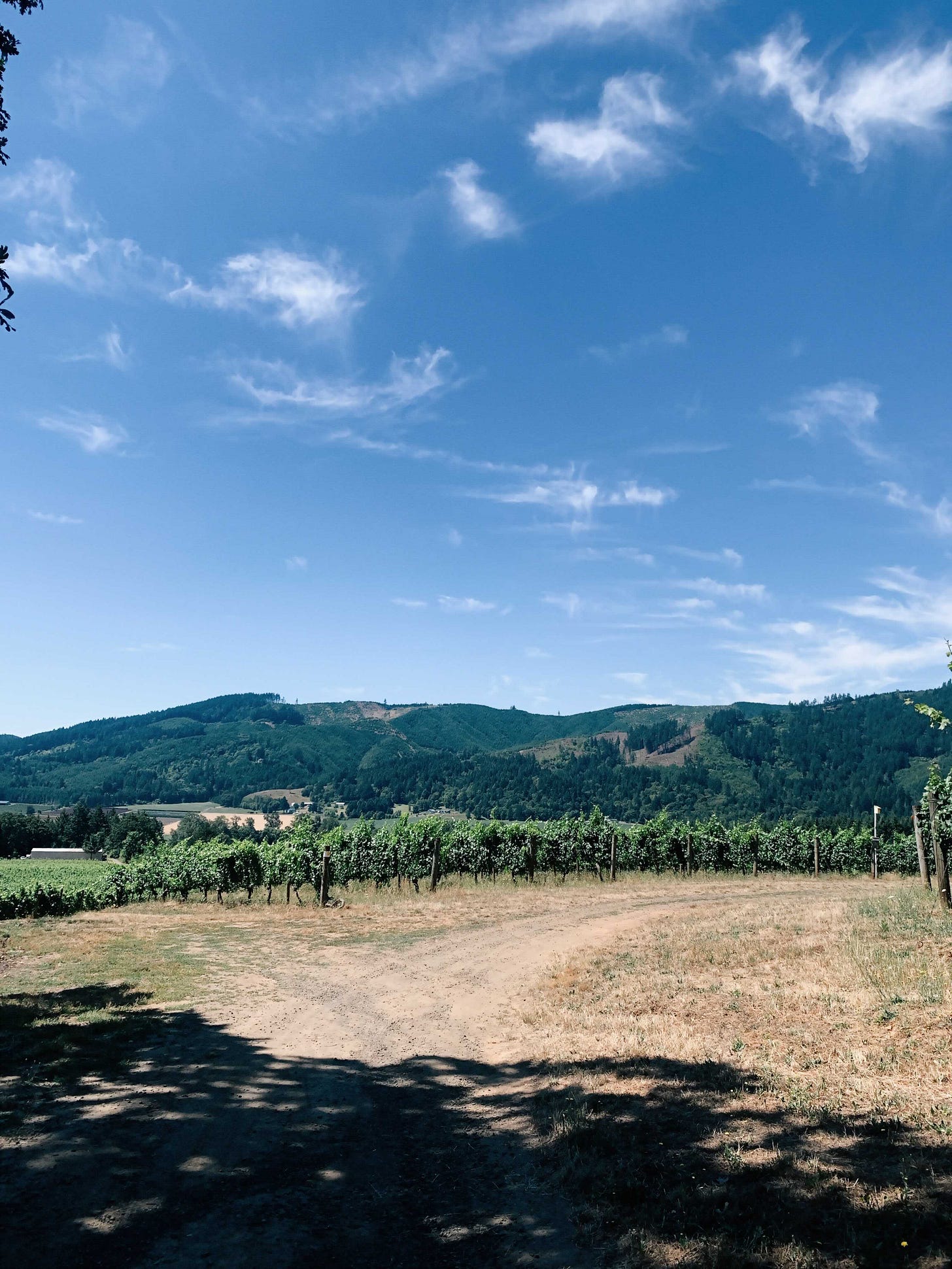
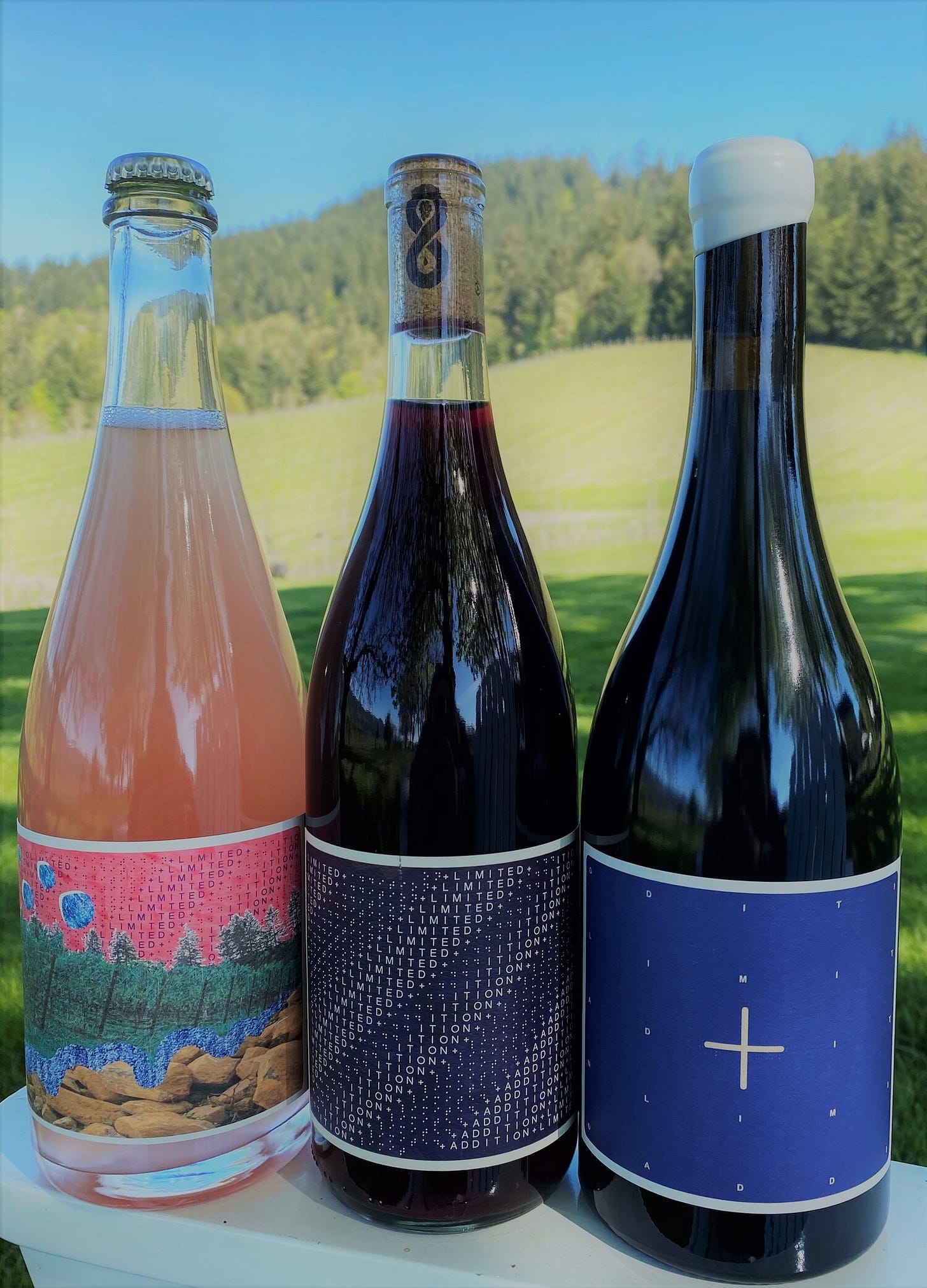
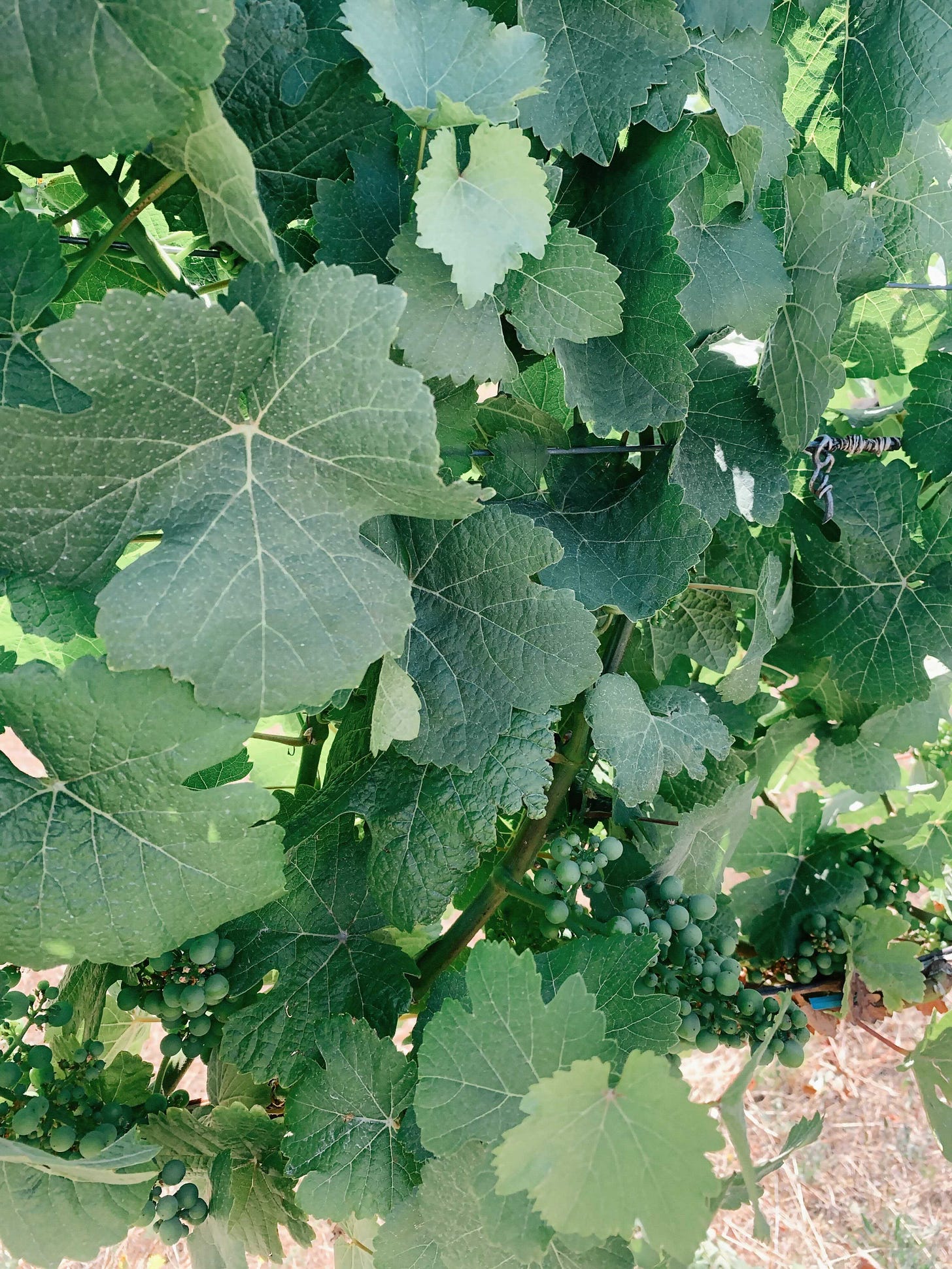
Wow; I learned a lot here about one of my favorite winemakers, who's also a super nice guy. I've had the privilege of not just tasting both David Hill and Limited Addition wines by Chad, but also relying on Chad as an information resource along my journey learning the industry. Thanks for the great wines and great conversations, Chad!
This winery is a joke along with its owners…